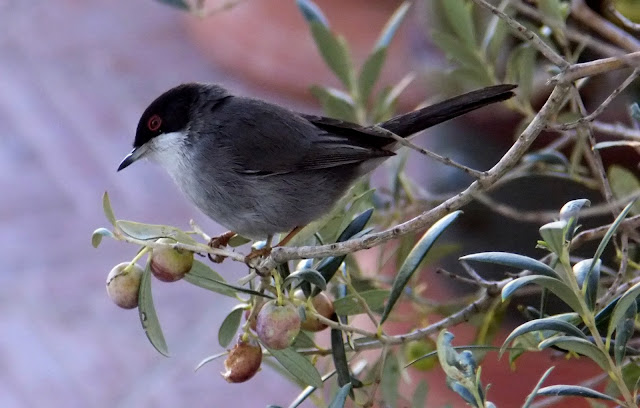The Chiffchaff is a small, olive-brown warbler with a pale eye stripe and faint wing bars. Its underparts are typically pale with a yellowish tinge, while the upperparts are olive-green to brown. The bird has short, rounded wings and a slightly forked tail.
Males and females are virtually identical in appearance, with females being slightly smaller on average. Juveniles closely resemble adults but may appear slightly duller and more yellow-tinged overall.
Chiffchaffs inhabit many wooded habitats, including deciduous and mixed forests, parks, gardens, and hedgerows. They are widespread across Europe and Asia, with populations extending from Western Europe to Eastern Siberia.
In the UK, Chiffchaffs are common summer visitors and increasingly year-round residents in southern areas. Some populations migrate to the Mediterranean and North Africa for winter, while others have begun overwintering in their breeding grounds, likely due to climate change.
Chiffchaffs are primarily insectivorous, feeding on various small insects and spiders. They glean prey from leaves and branches, often hovering to snatch insects in mid-air, as well as on the ground.
They may supplement their diet in autumn with small berries and fruits, especially during migration. Their normal daily intake of flies will usually be equal to a third of their body weight.
Chiffchaffs are restless and active birds, constantly flitting through foliage in search of insects. They often hover while foraging, a distinctive behaviour among warblers.
During the breeding season, males become highly territorial, vigorously defending their areas with persistent singing and occasional aerial displays.
%2022.jpg)
The Chiffchaff's name is onomatopoeic, derived from its distinctive song: a repetitive 'chiff-chaff' or 'zilp-zalp'. This simple yet persistent call is often the first sign of spring in many European woodlands. They also have a soft 'hweet' call that is used for contact and alarm.
Chiffchaffs typically form monogamous pairs during the breeding season, which runs from April to July in most of Europe. Males establish territories and attract females with persistent singing.
The nest is a domed structure made of grass, leaves, and moss, usually located close to the ground in low vegetation or brambles. Females lay 5-6 white eggs with dark speckles.
Incubation lasts about 13-14 days, and the female primarily performs it. Both parents feed the chicks, which fledge after 12-15 days. Pairs often raise two broods per season in favourable conditions.
The Chiffchaff typically lives for 2 to 3 years, with a maximum recorded lifespan of 8 years.
Like all birds, lifespan can be affected by factors including predation, habitat quality, disease, and access to food sources.
While the Chiffchaff is currently listed as Least Concern, it faces threats from habitat loss and climate change. Conservation efforts focus on preserving woodland habitats and monitoring population trends across its range.
It benefits from protection under the Wildlife and Countryside Act in the UK.
%20(Saxicola%20rubicola)%2020.jpg)
%2019.jpg)
%2020.jpg)
%2021.jpg)
%2020.jpg)







%2020.jpg)
%20(Phoenicurus%20ochruros)%2020.jpg)
%20(Phoenicurus%20ochruros)%2021.jpg)















%2020.jpg)
%2020.jpg)

%20(Sylvia%20atricapilla)%2019.jpg)
%20(Sylvia%20atricapilla)%2020.jpg)
%2020.jpg)
%2021.jpg)
%2022.jpg)
%2023.jpg)
%2020.jpg)
%2020.jpg)



%2020.jpg)
%2021.jpg)
%2020.jpg)
%2021.jpg)
%2022.jpg)
%2023.jpg)